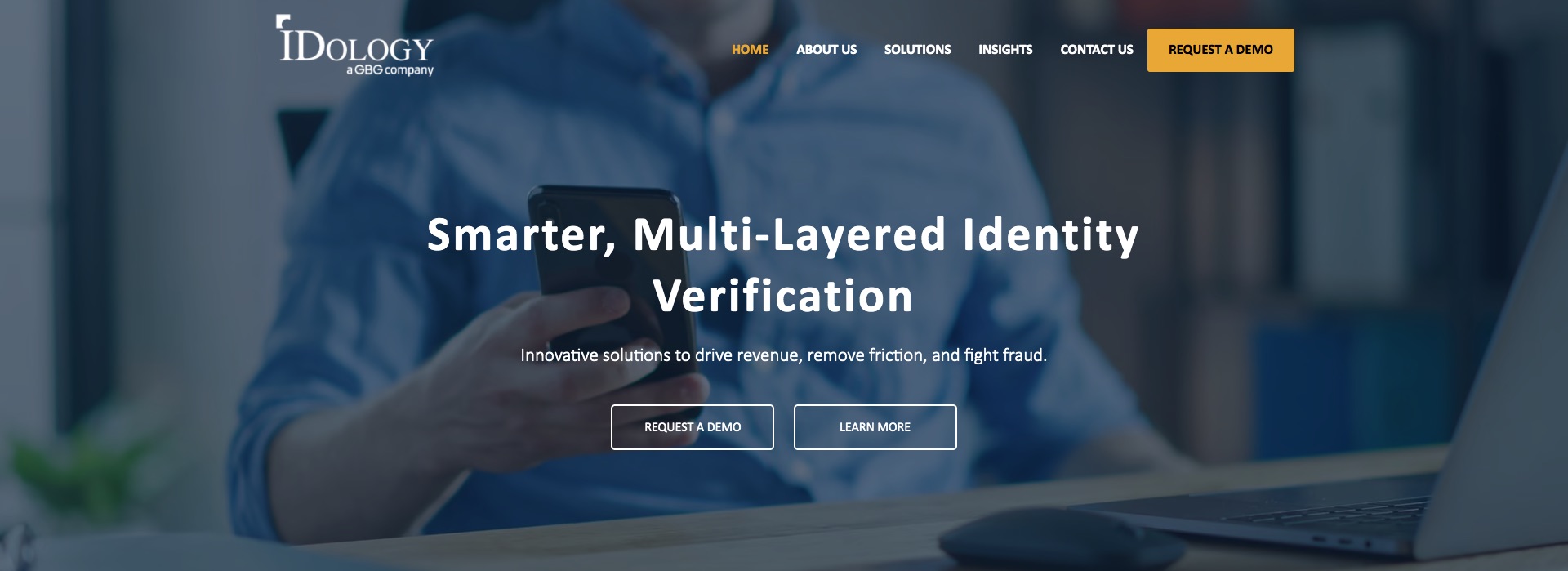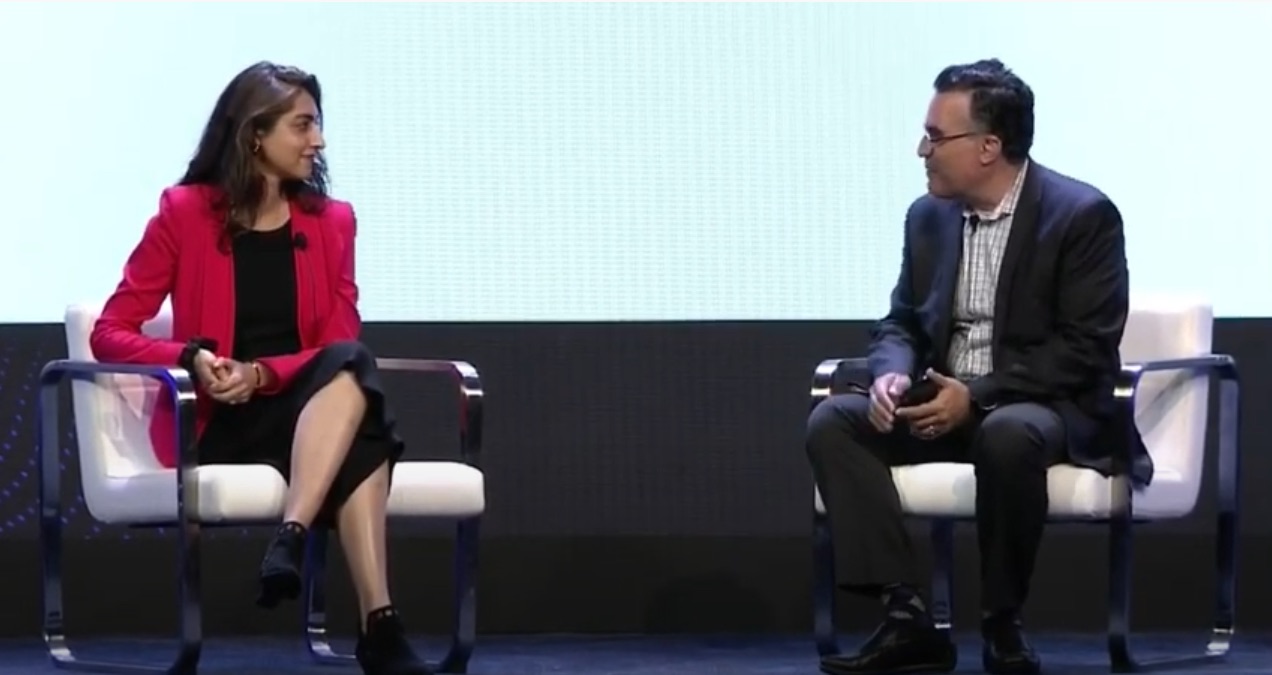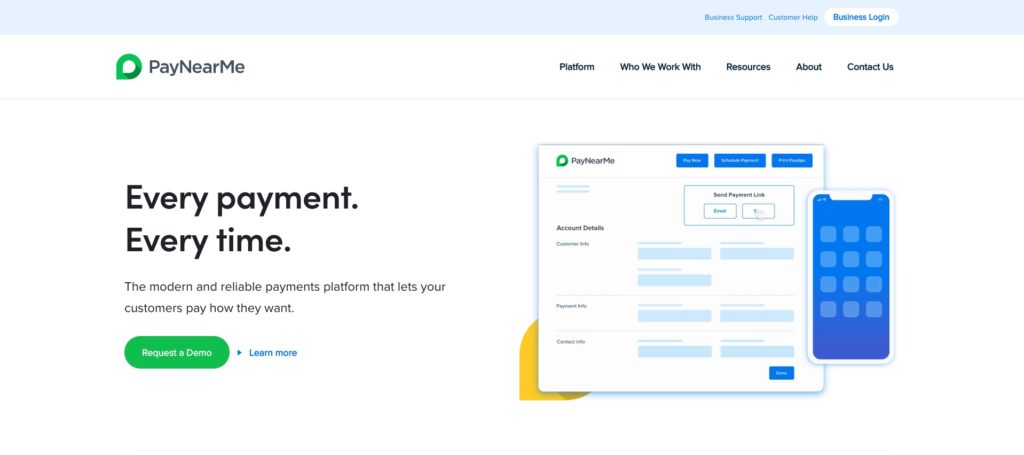
Asked what she was most proud of after a year as CEO of IDology, a GBG company and a leader in identity verification and fraud prevention, Christina Luttrell gave a big tip of the hat to her team.
“Without a doubt, I am most proud of what our team has delivered to IDology customers and the difference they have made,” she said. “For example, our dedicated fraud team recently spotted a new fraud vector utilizing tumbled email addresses and collaborated with IDology’s product innovation team to build, test and deploy a capability that mitigated the risk head-on, within weeks. Their dedication to serving our customers is energizing and I’m humbled by their contributions every day.”

In over 10 years at IDology, Luttrell has significantly advanced the company’s technology, forged close relationships with IDology customers, and driven the development of technology innovations that help organizations stay ahead of constantly shifting fraud tactics without impacting the customer experience.
We caught up the IDology’s Chief Executive in the wake of the company’s victory at the Finovate Awards, where IDology was named “Best Identity Management Solution.”
IDology won Best Identity Management Solution at the Finovate Awards this fall. What is unique about IDology’s approach to fraud fighting and identity verification?
Christina Luttrell: First, thank you for the honor. I am exceptionally proud of my team and thrilled about upcoming innovation we’ll be introducing into the marketplace.
Regarding the IDology difference, it’s based on our philosophy and relentless focus on customer success. From a business value perspective, we facilitate more revenue with less friction and fraud while enabling compliance. What makes IDology unique is how we go about it. We always consider ourselves a product company with a solution offering that utilizes vast and diverse data sources, acquiring deep fraud expertise, and building our consortium network for collaborative cross-industry fraud insights and combining all of these elements into one single integrated flexible platform called ExpectID.
We pioneered multi-layered identity verification by fusing physical and digital identity attributes. When we conceived identity verification orchestration and built the ExpectID platform we wanted to go beyond basic data matching to leverage thousands of diverse, high-quality data sources, correlate multiple identity attributes such as location, device and activity-based data, and use advanced algorithms and rules engines to analyze and evaluate risk factors. We were especially intentional to empower customers to customize a nearly infinite number of identity attribute combinations to gain more control of data and better understand risk.
We are innovating the ExpectID platform to new levels with anti-fraud machine learning layers, adding cross border verification, enriching data intelligence and launching more mobile capabilities so our customers can keep ahead of fraud and stay ahead in their business.
Can you discuss the importance of data diversity in the identity verification process and the challenge of achieving it?
Luttrell: Single sourcing identity data for verification is dangerous. With massive breaches, entire identity data pools have been compromised, packaged and sold on the Dark Web for new account fraud and account takeover schemes. This can be especially problematic when financial institutions use the same data sources for identity verification as they use for credit risk analysis.
Diversifying data from multiple streams and sources, whether public sources or digital attributes, such as email or mobile phone providers, and fusing them together, enables a more complete identity profile and deters schemes, such as synthetic identity fraud. The challenge isn’t so much in accessing identity data feeds, but in designing and orchestrating effective technologies and skill sets to create decision engines with precision and accuracy that can quickly adjust as fraud and consumer behaviors shift. Doing so takes years to develop, deliver, harden, and prove.
What role do configurability, flexibility, and orchestration play in an identity verification regime?
Luttrell: Our research shows that 90 percent of businesses view identity verification as a strategic differentiator. However, that competitive advantage is only realized when businesses are empowered to verify who they want, when they want, and which attributes they want, with economy and precision.
As a result of COVID and its implications on businesses and consumers, the identity attribute data and fraud landscapes are changing at faster rates than ever before, resulting in a growing number of elements that need to be tweaked, tuned, and verified to validate a consumer’s identity.
At the same time, we found that 70 percent of Americans think companies collect personally identifiable information (PII) online about them without their knowledge. Needless to say, consumers want to provide as little PII as possible. They also express intense dislike for encountering unnecessary verification steps and will abandon account creation if they feel the identity collection process isn’t secure or is overly complex. All of these factors point to real challenges for businesses.
The ability to build, customize and evolve their identity verification programs to suit the unique requirements, risks and opportunities of their industries, use cases, customers, and compliance needs – and defend against ever-evolving fraud schemes – is critical for businesses.
The ideal identity verification solution empowers businesses to customize and fully flex transparent validation checks, workflows, and attributes economically, at any time throughout the customer journey. When looking to mitigate fraud, either upfront in the customer journey or upon re-entry, the desired solution will provide a high level of flexibility to validate customer leads without sacrificing risk protection and compliance or generating front- or back-end friction.
A superior solution will enable businesses to pick and choose, mix and match identity attribute proofing and curate workflows, based on their unique needs.
Last but not least, the orchestration of multiple systems and services is key. At IDology, we’ve embedded flexibility for seamless orchestration across services and systems to our solution for over 14 years. Coordinating with many data sources and services, while offering deep “home-grown” analytics based on hundreds of combined years of experience in fraud and identity can enable businesses to onboard legitimate customers without friction while keeping the fraud out. Our orchestration platform is a one stop shop for managing KYC / CIP, validating emails, geo location, phone numbers, identity signals, and access to the largest consortium network in the country, offering dynamic and seamless escalation for methods such as document verification-based smart rules controlled by the business.

One of the more important developments in AI technology is the idea of explainable AI which enables the results of a solution to be understood by human agents. Is explainability a similarly important concept in the world of digital identity verification?
Luttrell: Artificial Intelligence (AI) and Machine Learning (ML) are hot buzzwords that often seem to be used interchangeably. Although widely used, there are major misconceptions about what these words actually mean. True AI means that a machine knows what to do with zero human interaction. When companies talk about using AI today, they’re really talking about using machine learning, which is an application of AI in which the system is “trained” by feeding it huge amounts of data and allowing it to adjust and improve.
As an early adopter of machine learning, we believe it plays an important role in building trust, removing friction and fighting fraud. By applying machine learning to the identity verification process, we have the power to analyze massive amounts of digital transaction data, create efficiencies, and recognize patterns that can improve decision making. At the same time, we recognize that machine learning alone is not enough.
Counter to the many benefits of utilizing machine learning are risks in its propensity for bias, lack of data transparency, and absence of governance. While machines are great at detecting trends that have already been identified as suspicious, a critical blind spot is their inability to detect novel forms of fraud. This is why we believe in a hybrid of machine learning and human intelligence.
Since 2016, we’ve supplemented machine learning with our fraud review team and today, continue using data, technology and expertise to meet the business needs of customers by verifying identities with high locate rates, low friction and less fraud. With the powerful combination of machine learning and human fraud expertise, we can analyze large amounts of data at scale while leveraging the intuition and expertise of our fraud review team to detect novel fraud, govern AI models to eliminate bias and reduce risk, and provide closed-loop data transparency.
Among the more recent challenges to identity verification is synthetic identity fraud. How significant is this problem and what needs to be done to combat it?
Luttrell: Synthetic identity fraud (SIF) continues to trouble businesses, causing financial institutions alone $50-$250MM in financial losses each year. The growth of this type of fraud can be attributed to its effectiveness for criminals and how difficult it is to detect.
Although there are no silver bullets, eradicating SIF requires businesses to monitor diverse data sources and employ multiple layers of integrated identity intelligence supplemented with system-specific SIF attributes, such as location, device and activity factors. This, along with dynamically evaluating a combination of cross-industry fraud data, machine learning, and human intelligence, has the potential to help businesses pinpoint instances of SIF.
You took over the top spot at IDology a year ago. What are you most looking forward to in your second year?
Luttrell: Going into the new year, I am excited about multiple things. For starters, GBG’s acquisition of Acuant opens up all kinds of possibilities to serve our customers with new innovation. I am also excited about global identity verification and making ExpectID the ultimate cross-border verification platform for easy and flexible international compliance and privacy from one single system. From tokenized identities to blockchain and advancements in machine learning, we are going into the next year with momentum and energy from the bottom up.
Speaking of accomplishments, you were recently named Woman of the Year at Golden Bridge Business and Innovation Awards. What does this recognition mean to you? What advice do you have for women who are pursuing leadership opportunities in technology today?
Luttrell: I have a great deal of gratitude and am humbled by the recognition. I see the recognition as a reflection of the excellence and talents of the entire IDology team. It also shows that I’ve been blessed with meaningful mentors along my career journey. At IDology in particular, dedication to our customer’s success is a value that has served me and the company well.
The advice I would offer women, and anyone for that matter, is to place the customer at the center of everything you do. Lead with confidence, but balance it with humility. Set and focus the business goals, persevere and stay positive. At the end of the day, we are all in this together so the kinder, the better.
Photo by Amina Filkins from Pexels





























